I don’t think that title is original and suspect its origin to be Winnie The Pooh related, but I think it describes this year’s Christmas project well.

Several of my friends found themselves on the receiving end of one or more of these bags this year and as much so I can remember how I made them as for any other reason, I’ll share the process here.
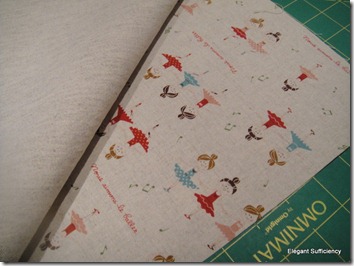
I began with two pieces of Japanese linen/cotton fabric in this case, though many of the Christmas present bags were made from Clarke and Clarke cotton found at Just Fabrics. For each of these medium sized bags, I cut two pieces of coordinating fabric, each measuring 21 x 14 inches.
I folded each in half, right sides together matching the two short sides and joined side and bottom together to make two bags taking about a half inch seam allowance. I then took them to the ironing board and pressed the bags flat.
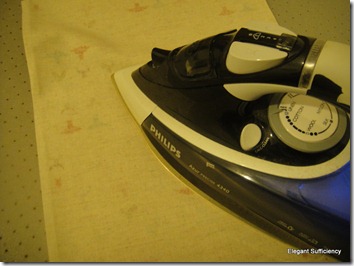
With me so far?
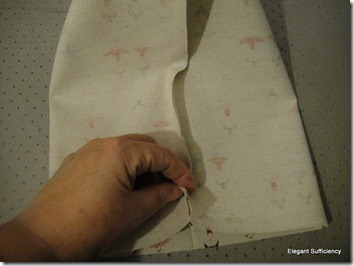
I opened each bag up and turned it round so that the seam aligned with the fold as shown in the photo, to do a bit of origami.

A square is formed for the base of the bag and with a bit of careful easing, I opened up the seams and pressed gently into shape.

It’s a good time to check that things really do line up straight and even and do a bit of maths. If I started with a piece of fabric 21 inches and folded in half with a half inch seam allowance, then the bag will be ten inches wide. If there are four sides to that square base, then each side will be 5 inches. Correct?
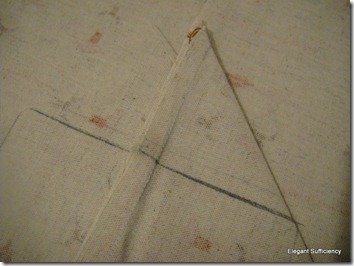
So, using a ruler to keep things straight and accurate as possible, I drew a line at right angles to the seam at the point where it measured 5 inches wide. Yes, I needed a couple of goes to get it correct but drew it in tailors chalk so I could erase any mistakes! A quilters rule was useful here because it had useful markings at 45 degrees which made getting these lines in the right place much easier.
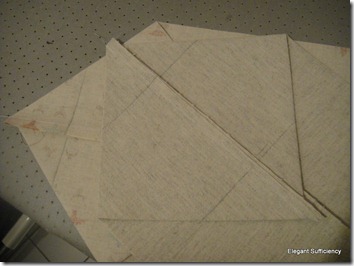
I did this at each side of the square for both bags and
took it back to my sewing machine to stitch along the lines I’d drawn.

Now I was able to turn one of the bags right way out and push out the corners. This cotton fabric is lovely to sew and creates good, crisp seams.
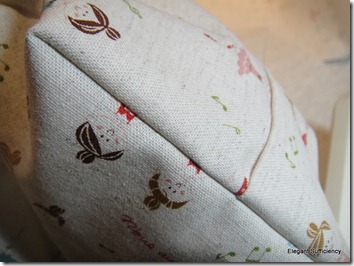
I put the patterned bag inside the plain bag, right sides together and lining the seam of one match the fold of the other (easier to do than explain). This means that the seams on the base are at right angles to one another rather than one on top of the other – making a neater and more sturdy finish.
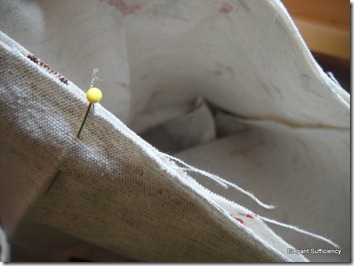
I stitched around the top edge, taking a scant half inch seam allowance and leaving a 3 inch gap to turn the bag through.
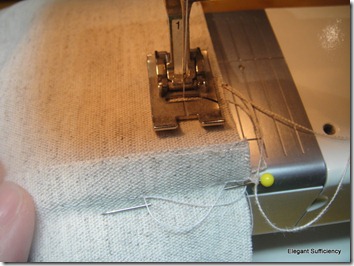
The two bags fit together so well that this is really easy and quick to do.
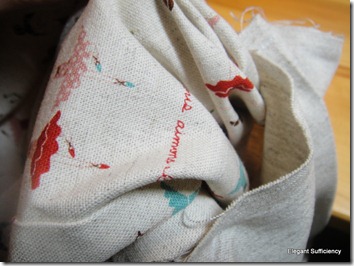
Turning them right way out is fairly straightforward too and the whole thing can be given a bit of a shake and teased into shape. These fabrics are great to work with.
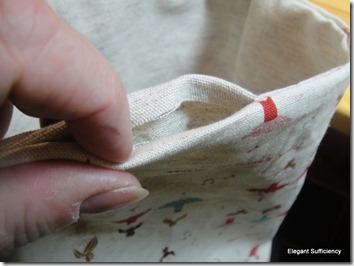
The small opening through which the bag was turned was easy to neaten and I didn’t other pinning or anything but simply topstitched the edge in one go.
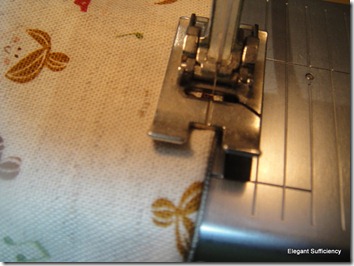
I made sure the folds in the base were all folded downwards and, because I’d sewn the two layers together with the seams forming a cross, the four triangular flaps all meet in the middle, forming a relatively firm base.
Does that make sense?
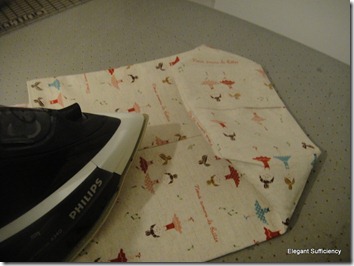
I gave the bag a press and trimmed off loose ends before opening up and turning over the top edge a couple of times, which makes it stand up nicely. Best of all, these are great to make in series – cut several pieces of fabric out, get the production line going and in no time at all, you’ve got a nice lot of bags ready for little girls to put things in.
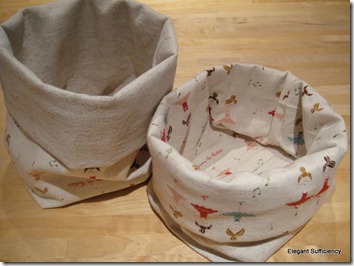
What do little girls put into these bags? Teddies, glitter and felt pens, it seems!
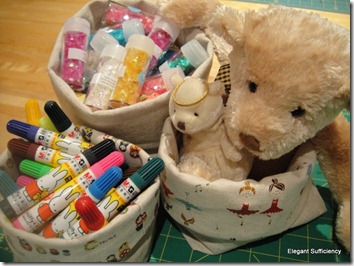
Though bigger girls might use them for knitting bits and pieces, for chargers and wires and bits of makeup, perhaps. Large bags can be used for home baked bread loaves – our favourite use of all.
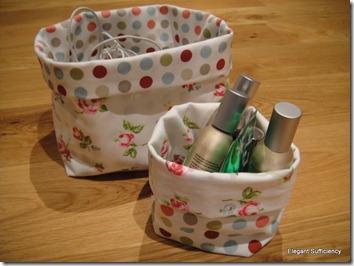
I’ve made these bags in four sizes:
Extra Small (with perfume and handcream in above): cut fabric 16” (+ 1” seam allowance) x 10”, base measures 4” square.
Small (with felt pens in above): cut fabric 18”(+ 1” seam allowance) x 12”, base measures 4.5” square
Medium (Teddy and glitter size above) 20”(+ 1” seam allowance) x 14”, base 5” square
Large (shown holding wires above, but could be used for bread) 24”(+ 1” seam allowance) x 16”, base 6” square. I find this is about as large as I like to go without interfacing.
Of course, fabric can be any size, but I like to make the maths of working out the base easy.
Have fun!!
Update on Sunday, January 9, 2011 at 11:01PM by
 Gill Thomas
Gill Thomas
See another bag in use at Jordi's blog today...glad she's finding it useful! (Thanks for the link, Jordi)
 Monday, January 17, 2011 at 3:59PM
Monday, January 17, 2011 at 3:59PM  sewing
sewing 







